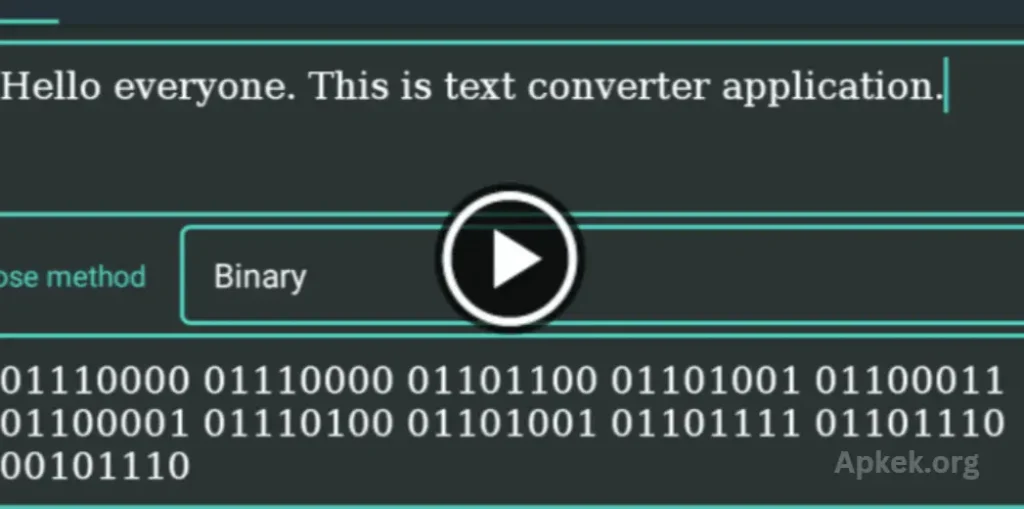At times, the messages we send may be misinterpreted or fall into the wrong hands. In such situations, using a secure method of communication becomes essential. Secret text, or encrypted messaging, ensures that only the intended recipient can access and understand the content. This approach protects sensitive information, maintains privacy, and builds trust in communication.
The primary advantage of using secret text lies in its ability to safeguard personal and confidential data from prying eyes. Whether sharing private details, business strategies, or personal conversations, encrypted communication helps maintain control over who sees what.
Decoding this type of text involves the use of a specific key or method known only to the sender and receiver. Without this key, the message remains unreadable, making it nearly impossible for outsiders to intercept or misuse the information.
What Is Secret Text?
Secret text refers to any message that is deliberately concealed or encrypted to prevent unauthorized access. This method ensures that only the intended recipient can read and understand the message. Secret text can range from simple substitution codes to highly advanced encryption protocols backed by mathematical algorithms.
The Role of Encoder-Decoder Systems
At the heart of modern secret text methods lies the encoder-decoder mechanism. This approach transforms the original message (plaintext) into an unreadable format (ciphertext) using an encoder. The recipient then uses a decoder—often a specific key or algorithm—to convert the ciphertext back into its original, readable form.
This process ensures that even if the message is intercepted during transmission, it remains unintelligible without the correct decoding method.
Encoding
Encoding involves converting the message into a secret format. This could be done through:
- Substitution ciphers – Replacing characters with other characters or symbols
- Base64 encoding – Converting binary data into ASCII format
- AES (Advanced Encryption Standard) – A widely used algorithm for encrypting text securely
Decoding
Decoding is the reverse process where the encoded message is translated back to its original form. This is only possible with the right key or decryption algorithm, ensuring that unauthorized users cannot access the content.
Benefits of Using Secret Text with Encoder-Decoder
- Enhanced Privacy
Protects messages from being read by unintended parties, especially in sensitive or high-stakes situations. - Data Integrity
Ensures the message remains unchanged during transmission. Any tampering becomes immediately noticeable. - Secure Transmission
Ideal for communicating over insecure networks like public Wi-Fi or shared servers. - Trust Building
Fosters confidence among users, knowing that their communications are safe and confidential. - Legal and Compliance Needs
Helps meet data protection regulations such as GDPR, HIPAA, and others that demand secure handling of information.
You may also like it:
Best Full Status Video Splitter App
What Is No Contact Rule WhatsApp
Common Applications and Tools
Several modern applications incorporate encoder-decoder technology to offer secure text communication:
- Signal – Open-source with advanced encryption, trusted by security experts.
- Telegram (Secret Chats) – Offers end-to-end encryption with self-destructing messages.
- WhatsApp – End-to-end encryption by default for all messages and calls.
- ProtonMail – Provides encrypted email services.
- VeraCrypt – Used for encrypting files and texts before sending them through a communication channel.
Real-World Use Cases
- Corporate Communication – Secure exchange of internal documents and contracts
- Government and Military – Protection of classified information
- Personal Privacy – Keeping personal messages confidential
- Journalism and Whistleblowing – Safe communication in sensitive investigations
Frequently Asked Questions
What is secret text?
Secret text refers to any message that has been intentionally hidden or encrypted so that only the intended recipient can read and understand it. It protects sensitive information from unauthorized access or interception.
How does an encoder-decoder system work in secret text communication?
The encoder converts the original message (plaintext) into an unreadable format (ciphertext) using a specific method or key. The decoder then transforms the ciphertext back into readable text using the same or a related key. This ensures the message stays secure during transmission.
Is secret text the same as encryption?
Not exactly. Secret text can involve basic encoding (like Base64 or Caesar cipher), while encryption uses more complex mathematical algorithms (such as AES, RSA) for security. Both serve to protect data, but encryption is stronger and more secure.
Can secret text be decrypted by hackers?
If weak encoding methods are used (like simple ciphers), they can be cracked easily. However, strong encryption (e.g., AES-256) is extremely difficult to break without the correct key, making it highly secure.
Can I create my own encoder-decoder system?
Yes, if you have programming knowledge, you can build a custom encoder-decoder system using languages like Python or Java. However, using well-tested libraries and tools is usually safer and more reliable.
Is secret text legal to use?
Yes, secret text and encryption are legal in most countries for personal and professional use. However, in some regions, strong encryption might be regulated or restricted. Always check local laws before using encryption tools.
Conclusion
In a world where data is constantly exchanged across digital platforms, the need for privacy and security is greater than ever. Using secret text with encoder-decoder systems provides a powerful, effective way to protect sensitive information from unauthorized access. Whether you’re a business professional, student, journalist, or everyday user, securing your communication helps ensure trust, confidentiality, and data integrity.
By transforming messages into unreadable formats and decoding them only for intended recipients, this method defends against threats such as hacking, surveillance, and data leaks. With the rise of advanced encryption tools and secure messaging apps, implementing secret text practices is not only smart—it’s essential.

